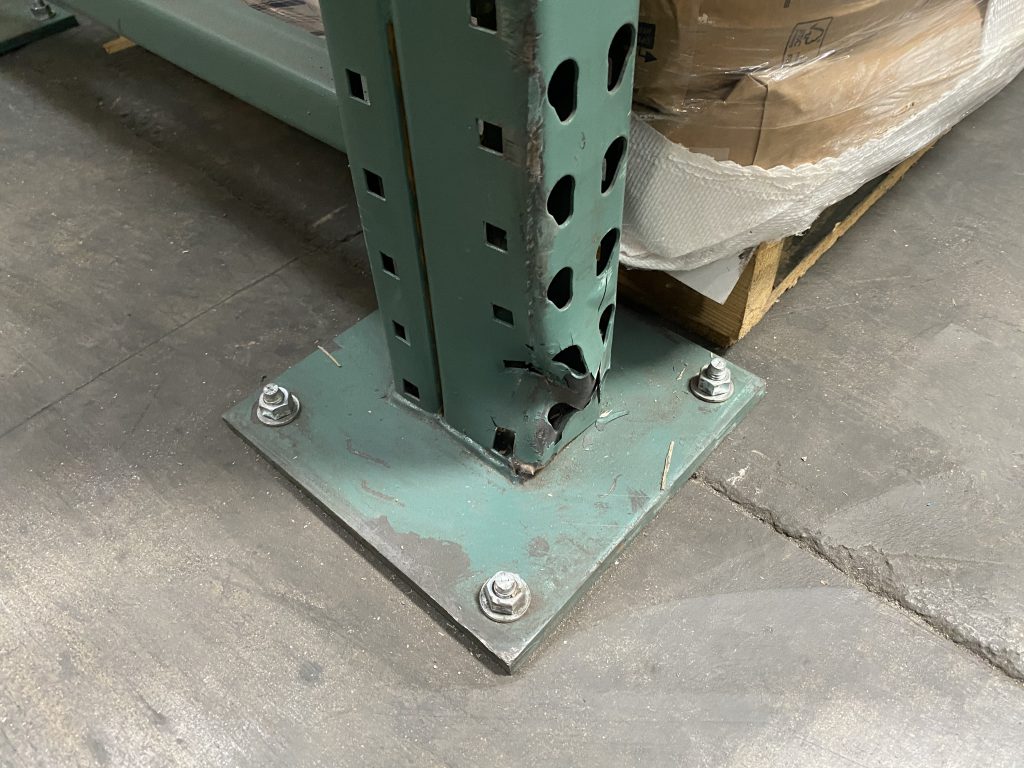Call Us :8615298359310
Call Us :8615298359310

Pallet racking systems form the foundation of modern warehouse storage, enabling efficient organization, easy access, and maximized use of space.
However, over time, these structures may suffer damage due to various factors, such as overloading, forklift collisions, or improper installation. Damaged racking can compromise safety, endanger warehouse personnel, and affect operational efficiency.
Several factors can lead to racking damage, with the most common being:
1. Overloading: Exceeding the specified weight capacity of racks leads to stress, bending, and potential collapse.
2. Forklift Collisions: Forklifts frequently hit pallet racks, causing dents, misalignment, or even structural damage to beams and uprights.
3. Improper Loading: Unevenly distributed loads or improper pallet placement can create weak points in the racking system.
4. Wear and Tear: Racks naturally degrade over time due to rust, corrosion, or fatigue, reducing their load-bearing capacity.
5. Poor Installation: Inadequately secured racks or failure to follow manufacturer guidelines during installation can make racking systems vulnerable to damage.
Racking systems experience different types of damage, each requiring a specific approach for repair:
1. Upright Frame Damage: Vertical posts may bend, twist, or lean after a collision or overloading. This weakens the structure and poses a safety risk.
2. Beam Damage: Horizontal beams, that support the weight of pallets, may bend, crack, or warp. This compromises the rack’s ability to bear loads.
3. Strut Damage: Minor strut damage, usually found on diagonal or horizontal braces, can affect overall stability if not addressed promptly.
4. Loose or Missing Bolts: Bolts and fasteners may loosen over time or go missing, making the rack susceptible to collapse.
Regular inspections are crucial for identifying signs of damage early and preventing accidents. Here are key indicators of damaged pallet racking:
Before any repairs can begin, all items must be removed from the damaged rack. This ensures a safe working environment for the repair team and prevents further damage to goods. Use a forklift or pallet jack to relocate inventory to a temporary storage area.
Thoroughly inspect the damaged racking components, focusing on both visible and hidden damage. Bent beams, twisted uprights, and sheared bolts should be documented. This step helps determine whether components can be repaired or need to be replaced. If the damage is minor, repairs may be possible. However, extensive damage often requires component replacement.
Based on the assessment, order replacement parts if necessary. Ensure that the new components match the specifications of the damaged rack. Using incorrect parts could result in improper repair, risking future failures.
Carefully disassemble the damaged section using appropriate tools like wrenches and socket sets. Remove damaged beams and uprights without disturbing the rest of the racking system. Be cautious to avoid causing further damage during this process.
Install new or repaired components based on your assessment. For minor damage, welding may be a viable option to restore strength. When replacing parts, ensure they are properly aligned and fastened according to the manufacturer's guidelines.
After replacing the damaged components, reassemble the racking system. Conduct a thorough inspection to ensure all parts are secure and properly aligned. Pay close attention to load-bearing elements such as beams and uprights. Any misalignment or loose parts could lead to future failures.
Once the rack has been fully repaired and inspected, safely reload the items. Make sure the load is evenly distributed and does not exceed the rack’s weight capacity. Following the manufacturer’s load recommendations ensures the system's longevity and prevents future damage.
When repairing damaged pallet racking, several essential tools and materials are required:
Repairing pallet racking offers several advantages that enhance warehouse operations and ensure long-term safety:
1. Cost-Effectiveness: Repairing damaged racks is more economical than replacing entire systems. It extends the lifespan of the racking structure, saving costs on new purchases.
2. Improved Safety: Regular repairs prevent structural collapses, ensuring a safe environment for warehouse workers and protecting stored inventory.
3. Operational Efficiency: Well-maintained racking systems optimize storage space and improve workflow, leading to better inventory management.
4. Regulatory Compliance: Keeping racks in good condition ensures compliance with safety standards, reducing the risk of fines or penalties.
5. Sustainability: Repairing racks minimizes waste by reducing the need for new materials and cutting down on environmental impact.
6. Preserving Inventory: Stable racking systems prevent inventory damage, reducing product loss and minimizing disruptions in operations.
Pallet racking is an integral part of warehouse operations, providing critical support for organized and efficient storage. However, damaged racks pose a serious risk to both safety and efficiency.
Prioritizing racking repairs and replacement may need careful consideration. If you would like to get a quote for new pallet racking, don't hesitate to contact us now, our team of experts is ready to evaluate the best fit for your warehouse.
Copyright © 2024 Jiangsu VISON Logistics Technology Co., Ltd. All Rights Reserved.  Network Supported
Network Supported
Sitemap | Blog | Xml | Privacy Policy